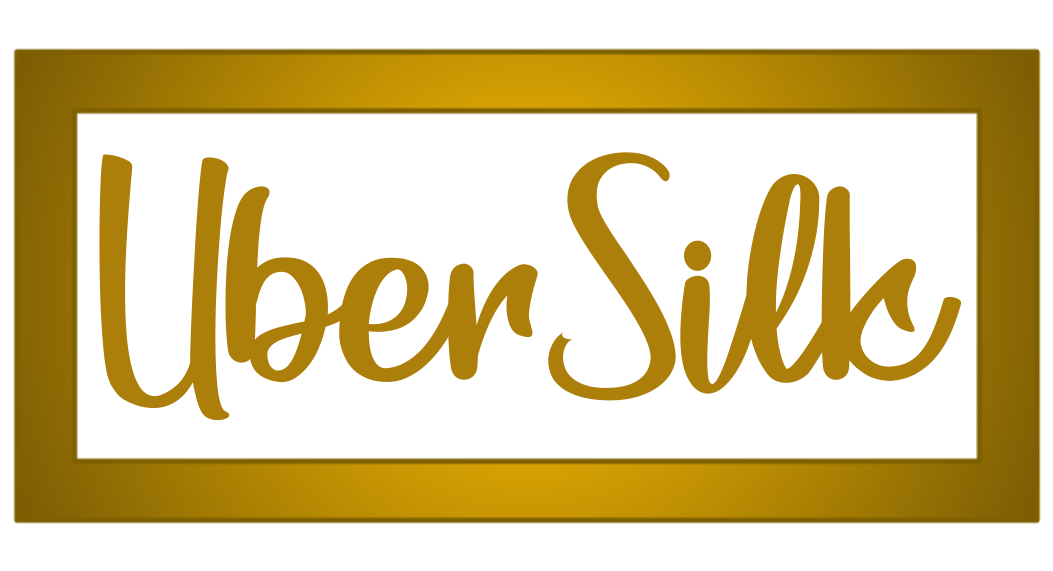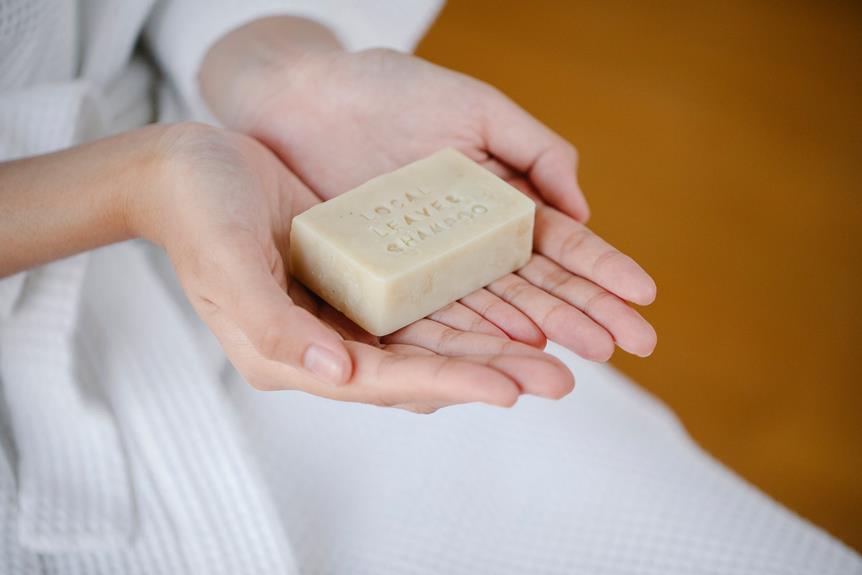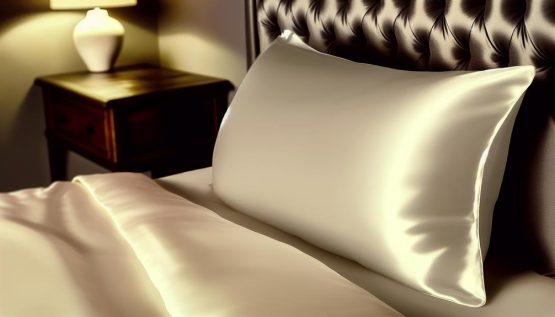Did you know that approximately 35% of women use dry shampoo as part of their regular hair care routine?
While it’s undeniable that dry shampoo offers convenience and time-saving benefits, there has been ongoing debate surrounding its impact on the health of our hair.
In this article, we will explore the potential drawbacks of using dry shampoo and weigh them against its advantages. We’ll address common concerns and provide insights into maintaining optimal scalp health.
So, if you’re curious about whether dry shampoo is truly bad for your hair and what alternatives may exist, join us as we uncover the truth behind this popular hair care product.
How Dry Shampoo Works
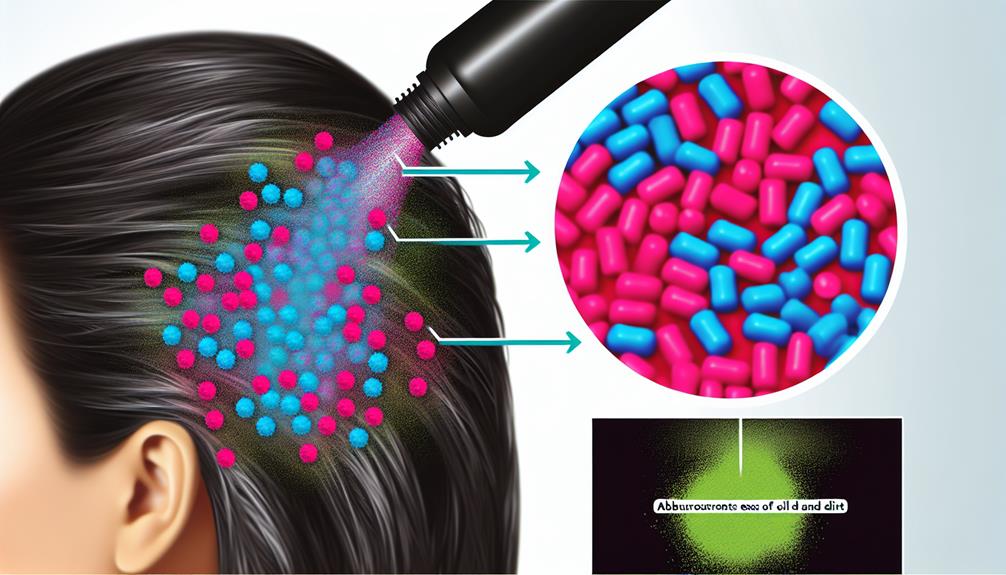
Dry shampoo works by absorbing excess oil in the hair between washes, helping to refresh and revive your locks without the need for water. It contains ingredients like rice starch or alcohol, which help to absorb the oil and leave your hair looking clean and refreshed. However, it’s important to note that dry shampoo doesn’t actually clean your hair and scalp. It simply helps to absorb the oil and refresh your hair’s appearance.
Dry shampoo can be a great tool for extending the time between wash cycles, especially after workouts or to maintain a desired hairstyle. It can save you time and water compared to traditional washing methods. However, it’s important to remember that dry shampoo shouldn’t replace regular shampooing. It’s best to use it on a regular basis between washes and properly wash and care for your scalp and hair in the shower.
Using dry shampoo sparingly is key to avoid product buildup. Focus on applying it to the roots, rather than the scalp, and use a brush to distribute the product evenly. Washing your hair with shampoo and conditioner regularly is necessary to avoid buildup. If you’re a heavy user of dry shampoo, consider using a clarifying shampoo every fourth wash to remove any excess product.
While dry shampoo can be a convenient option, it’s important to be aware of potential issues. Dry shampoo doesn’t remove all oils, dirt, and product buildup, which can lead to scalp problems like itching, flaking, and fungal infections. Poor scalp health can also result in hair breakage, thinning, and loss. Therefore, it’s crucial not to rely solely on dry shampoo as your hair care method. Occasional use is generally safe, but caution is advised to ensure the health of your hair and scalp.
Benefits of Using Dry Shampoo
Using dry shampoo offers several benefits for maintaining and refreshing your hair between washes. Not only does it absorb excess oil, but it also leaves your hair looking clean and refreshed.
Dry shampoo can save you time and water compared to traditional washing, making it a convenient option for those on the go. It’s particularly useful after workouts or to maintain a desired hairstyle.
However, it’s important to note that dry shampoo shouldn’t replace regular shampooing. Properly washing and caring for your scalp and hair in the shower is still necessary.
Proper Usage of Dry Shampoo
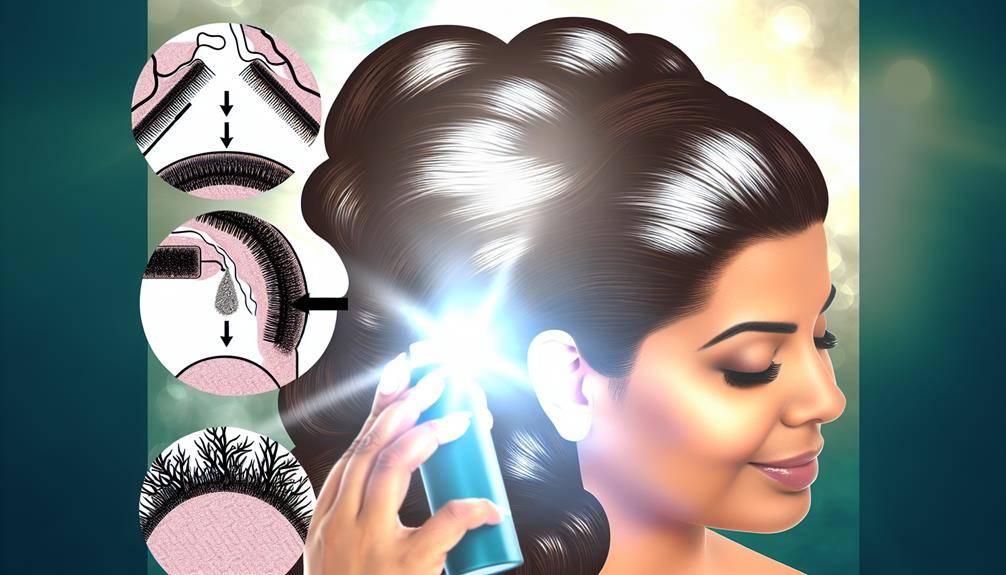
After understanding the benefits of using dry shampoo, it’s crucial to learn the proper usage techniques to ensure optimal results for your hair.
To start, treat your scalp like the rest of your skin. Just like you cleanse your face, you need to cleanse your scalp. Use dry shampoo on a regular basis between washes, but make sure to wash and care for your scalp and hair properly in the shower.
When using dry shampoo, remember to use it sparingly to avoid product buildup. Focus on applying it to the roots, not the scalp, and use a brush to distribute the product evenly.
And don’t forget to wash your hair with shampoo and conditioner regularly to avoid buildup.
Tips for Using Dry Shampoo
To get the most out of your dry shampoo, here are some helpful tips for using it effectively:
- Use dry shampoo sparingly to avoid product buildup: Applying too much dry shampoo can leave a residue on your hair, making it feel heavy and weighed down. Start with a small amount and add more if needed.
- Focus on applying dry shampoo to the roots, not the scalp: The roots of your hair are usually the oiliest part, so concentrate the dry shampoo there. This will help absorb excess oil and give your hair a refreshed look.
- Use a brush to distribute the product evenly: After applying dry shampoo, use a brush to distribute it evenly throughout your hair. This will ensure that the product is absorbed properly and prevents any clumping or residue.
Potential Issues With Dry Shampoo
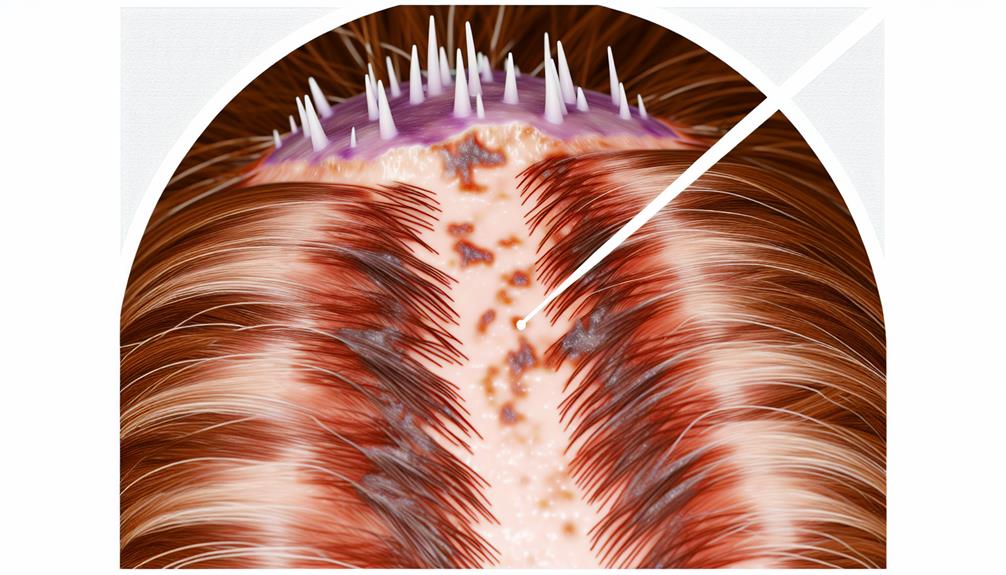
Now let’s explore some potential issues that may arise when using dry shampoo, shedding light on the not-so-glamorous side of this popular hair product. While dry shampoo can be a convenient option for refreshing your hair between washes, it’s important to be aware of its limitations and potential drawbacks. Here are some potential issues to consider:
| Potential Issues with Dry Shampoo |
|---|
| Dry shampoo does not remove all oils, dirt, and product buildup |
| It can cause scalp problems like itching, flaking, and fungal infections |
| Poor scalp health can lead to hair breakage, thinning, and loss |
| Dry shampoo should not be relied on as the sole method of hair care |
| Occasional use of dry shampoo is generally safe, but caution is advised |
While dry shampoo can be a time-saving solution, it’s essential to prioritize the overall health of your scalp and hair. Regular use of traditional shampoo and conditioner, along with proper cleansing and care, are still necessary for maintaining healthy locks. So, while dry shampoo can be a helpful tool, it should not replace regular hair care practices.
Common Scalp Problems From Dry Shampoo
Using dry shampoo regularly can lead to common scalp problems that can affect the health and appearance of your hair. It’s important to be aware of these issues to make informed decisions about your hair care routine.
Here are three common scalp problems that can arise from using dry shampoo:
- Itching and Irritation: Dry shampoo can cause itching and irritation on the scalp, especially if you have sensitive skin. The buildup of product and oils can clog hair follicles, leading to discomfort and potential inflammation.
- Flaking and Dandruff: Dry shampoo can disrupt the natural balance of your scalp, leading to flaking and dandruff. The buildup of product can create a breeding ground for yeast and bacteria, resulting in an itchy scalp and visible flakes.
- Fungal Infections: If dry shampoo isn’t properly removed from the scalp, it can create a moist environment that promotes the growth of fungi. This can lead to conditions like scalp ringworm, which cause redness, itching, and hair loss.
To maintain a healthy scalp, it’s important to use dry shampoo in moderation, cleanse your scalp regularly, and ensure proper removal of product buildup.
Importance of Regular Shampooing
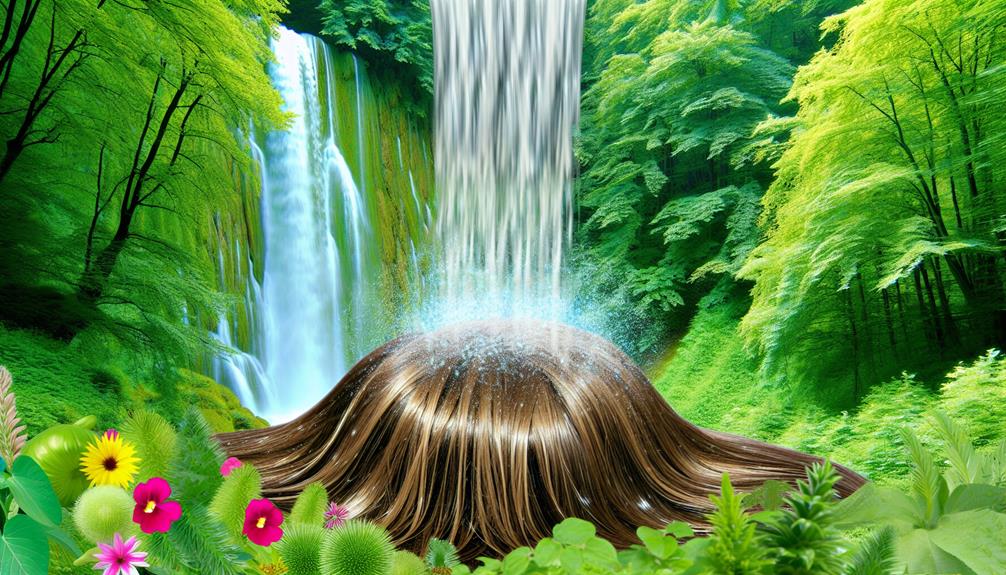
Regular shampooing is essential for maintaining a healthy scalp and ensuring your hair stays clean and free from buildup. Regular shampooing helps to remove dirt, oil, and product buildup that can accumulate on your scalp and hair. It also promotes good scalp health, which is important for preventing issues like itching, flaking, and fungal infections.
While dry shampoo can be a convenient option for refreshing your hair between washes, it shouldn’t replace regular shampooing. Additionally, using a regular shampoo allows you to properly cleanse and nourish your hair, keeping it strong, shiny, and healthy.
Conclusion and Final Thoughts
In closing, it’s important to recognize the benefits and limitations of dry shampoo in your hair care routine. Here are three key takeaways to keep in mind:
- Dry shampoo is a convenient solution: It helps absorb excess oil, refreshes hair, and extends the time between washes. This can save you time and water while maintaining a clean and refreshed look.
- Proper usage is crucial: Treat your scalp like the rest of your skin by using dry shampoo sparingly and choosing unscented or gently scented varieties. Additionally, remember to regularly wash and care for your scalp and hair in the shower to avoid product buildup.
- Dry shampoo isn’t a substitute for regular shampooing: While dry shampoo can be a helpful tool, it shouldn’t be relied upon as the sole method of hair care. Occasional use is generally safe, but caution is advised to prevent potential scalp problems and hair damage.
Frequently Asked Questions
Can Dry Shampoo Completely Replace Regular Shampooing?
Dry shampoo is a convenient option to refresh hair between washes, but it can’t completely replace regular shampooing. While it absorbs excess oil and gives a clean appearance, it doesn’t actually clean the hair and scalp. Regular shampooing is important for maintaining scalp health, preventing buildup, and removing dirt and product residue.
Dry shampoo can be a time-saving alternative, but it should be used in moderation and shouldn’t be relied upon as the sole method of hair care.
How Often Should I Use Dry Shampoo Between Washes?
How often should we use dry shampoo between washes?
It’s important to find a balance. While dry shampoo can be a convenient way to extend the time between washes, it shouldn’t replace regular shampooing altogether.
We recommend using dry shampoo sparingly and on a regular basis, focusing on the roots rather than the scalp.
It’s also crucial to properly wash and care for your hair in the shower to avoid product buildup and potential scalp issues.
Can Using Dry Shampoo Cause My Hair to Become Dry or Damaged?
Using dry shampoo on a regular basis can cause dryness and damage to our hair. The product absorbs excess oil, but it doesn’t actually clean our hair and scalp. This can lead to buildup and scalp problems like itching and flaking.
Poor scalp health can even result in hair breakage, thinning, and loss. While occasional use is generally safe, it’s important to properly wash and care for our hair to avoid these issues.
Is It Okay to Use Dry Shampoo on Colored or Chemically Treated Hair?
Using dry shampoo on colored or chemically treated hair can be a convenient option between washes. It helps absorb excess oil and refresh your hair, extending the time between wash cycles.
However, it’s important to use it sparingly to avoid product buildup. Make sure to focus on applying it to the roots rather than the scalp and use a brush to distribute it evenly.
Regularly washing and caring for your hair and scalp is still necessary to maintain their health.
Can Dry Shampoo Cause Hair Loss or Thinning Over Time?
Dry shampoo is a convenient option for refreshing hair between washes. It absorbs excess oil and leaves hair looking clean and refreshed.
However, it’s important to note that dry shampoo shouldn’t replace regular shampooing. While occasional use is generally safe, relying solely on dry shampoo can cause scalp problems and potentially lead to hair breakage, thinning, and loss.
It’s best to use dry shampoo sparingly and properly care for your scalp and hair through regular washing and conditioning.
Conclusion
In conclusion, while dry shampoo can be a convenient option for extending the time between washes or refreshing your hair, it’s important to use it properly and in moderation.
While it can absorb excess oil and provide benefits, overusing dry shampoo can lead to potential issues such as scalp problems and build-up.
Maintaining proper scalp health and regularly shampooing your hair is still essential for overall hair care.
So, use dry shampoo wisely and make sure to prioritize regular cleansing for healthy and beautiful hair.
